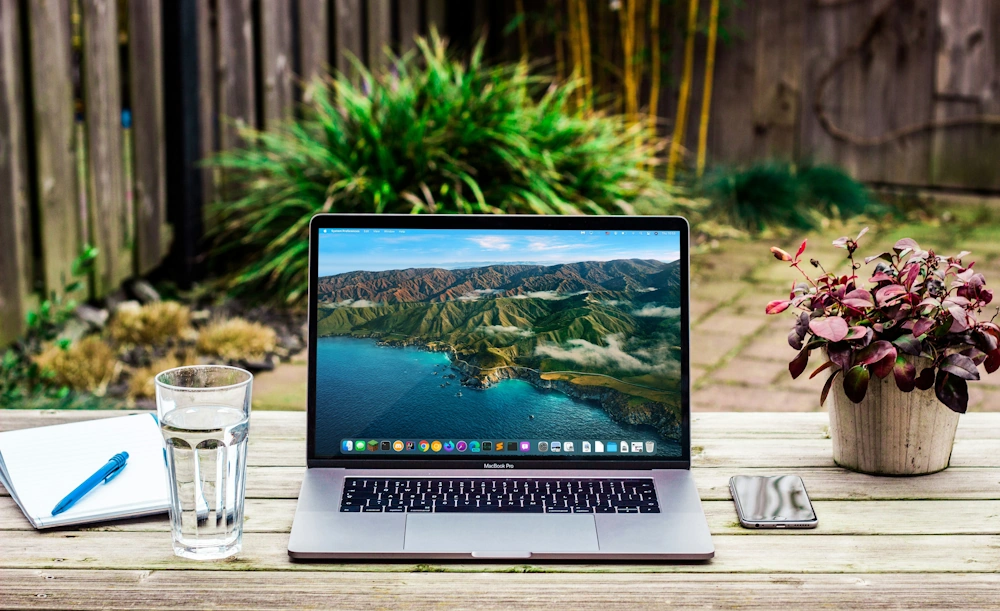It’s hard to imagine a life without a laptop. This is especially true for people who travel a lot, and not just for work.
When you are at home or at an office, there is usually a dedicated desk for a desktop computer. Or, if you prefer it, a laptop since it helps with minimizing required space.
Compared to desktop computers, laptops excel in portability. It’s arguably the most important factor when you try to decide which computer type to purchase.
At the same time, the final price plays a role as well. Not everyone can afford new computers, which is why spending money on a used laptop is quite common.
The decision comes with pros and cons. However, it still comes down to your budget. If you have no option but to go with a second-hand device, so be it.
Having said that, there are still a fair few things to be mindful of. Before you commit to a purchase, make sure to follow the steps mentioned below.
#1 – Choose a Reliable Vendor
The first thing on the list is choosing a reliable vendor. There are all kinds of laptop sellers, from individuals on social media to second-hand goods stores near you.
Why should you look for a reliable vendor? The answer is simple. Choosing one eliminates all the potential problems that arise from dealing with questionable vendors.
Purchasing from an individual via social media can be cheaper than from a reputable second-hand goods vendor. However, it is better to be safe than sorry.
Moreover, when you purchase from a stranger online, you cannot guarantee that you will get a laptop they advertise. Meeting in person beforehand is an obvious step, but what if the seller lives far away and asks to transfer them money first?
There are safety nets to minimize the risks, but why take them in the first place? Help yourself by choosing a reliable vendor.
#2 – Inspect the Body
Assuming you can get your hands on a laptop first before spending money, start with inspecting the body.
Look for scratches, dents, etc. Since the laptop is second-hand, it’s expected that it will have a couple of dents.
If you don’t care about the looks too much, you can ignore them. Or, if possible, put a sticker on it and call it a day.
The issue becomes problematic if the laptop’s body is in a really bad condition. Cracks and other glaring issues scream that the laptop is on its last legs. Spending money on it is bound to backfire because you will need to find a replacement in not too long.
#3 – Boot the Laptop
The next step is to boot the laptop. Even before it loads, you can get an idea of what to expect. For instance, if the loading screen takes too long, treat it as a telltale sign that the internal hardware is not doing too great and might not be worth the trouble.
The sound the laptop makes is another indication. If it’s really loud, the odds are that the previous owner did not bother cleaning the dust inside. It will be another box to check for you if you buy the device.
#4 – Check the Display

A good working screen is one of the most important aspects. You cannot use a laptop without one.
It may not come as a surprise that many laptop owners want to get rid of their computers precisely because they are facing display issues.
A small scratch on the laptop’s screen is not the end of the world, but don’t underestimate what it means to the overall device state.
Find a room that’s bright enough and inspect the laptop’s screen thoroughly. Open a blank white page via Pain, Notepad, or another application. If the screen’s brightness is too low, check how to make screen brighter for better visibility.
If the display is beyond saving, there is no reason to even consider purchasing such a laptop.
You will spend more money replacing the screen than you would buying another used laptop that is in actual working condition.
#5 – Pay Attention to the Battery
Don’t expect a decent battery on a second-hand laptop. It’s one of the inevitable problems for laptop owners, regardless what laptop brand they get.
Still, it’s reasonable to expect that a laptop, even if it’s old, should last for at least a few hours after it’s been fully charged.
If you boot the device and notice its battery life drops fast without running too many resource-heavy applications, it should be a significant red flag.
There is always an option to replace a battery, but you have to consider how much it would cost. Similar to fixing the laptop’s screen, a new battery might not be worth it.
Also, if you really don’t mind it, then having the charger plugged in all the time could be the way to circumvent lackluster battery life. At the same time, however, you should forget about using such a laptop when there are no electrical outlets to charge it when you are traveling.
#6 – Test the Keyboard
Laptops have integrated keyboards and trackpads. The latter replaces a mouse, but you can still get an external mouse and use it instead of a trackpad if you prefer.
Keyboards, on the other hand, are a bit trickier. Even cheap options can still get a bit too expensive, so you should look for a used laptop with a keyboard intact.
Open Notepad or another text application and go through each key individually. It should be responsive.
One or two malfunctioning keys might not be too much trouble to replace. Even so, if the problem is too much and many keys are not working properly, then it’s probably better to look for another laptop.
#7 – Examine the Ports
Examining ports can be tricky if you don’t come prepared. Make sure to take a couple of accessories, such as USB flash drives, so you have an easier time determining the state of the laptop’s ports.
An accessory should slide in effortlessly. If it gets stuck, then something is wrong (double-check to confirm that it’s not the accessory that’s causing the problem).
If mounting the accessory is fine, the laptop also has to pass the test of recognizing the accessory.
Even if the port itself is not broken physically, it may still fail to recognize the accessories you plug in.
The lack of drivers could be one of the reasons. Checking for updates and installing them if they are available may fix the problem. Keep it in mind and don’t give up on a laptop quite yet if it presents port-related issues.
#8 – Investigate the Built-in Features
One of the final things to do is check other built-in features of the laptop. Namely the speakers, Wi-Fi, and webcam.
All three should function properly. Otherwise, you are in for a lot of trouble. In the case of speakers, you can disable them and use earbuds or external speakers, but if the webcam or Wi-Fi are not working properly, it’s hard to justify spending money on such a laptop.
#9 – Feel the Overall Performance

Spend some time browsing the internet or playing a video game on the laptop to get the feel of how it performs.
Naturally, second-hand devices will struggle a bit, but you should still feel comfortable using a laptop.
If the overall performance leaves you unsatisfied due to stuttering, random crashes, long loading times, and so on, you still have a few things to try.
For example, try to free up the storage on the laptop’s drive. Then, scan it for malware. Even relatively small viruses can cause significant performance issues.
Finally, if nothing else works and you are still not ready to give up, reinstall the operating system and give the device a clean slate. If that doesn’t solve the problem, probably nothing will.
#10 – Remember That You Can Bargain the Price
The last thing to mention is how you are in a position to bargain. People want to get rid of their used laptops and make some money back before the device breaks completely.
If you feel like you can get a good deal out of it, try to bargain and lower the price. 10 or 20 dollars might not seem like a big deal, but it still helps, especially if you need to spend some of your money by investing it in the laptop you just purchased.
Conclusion
To sum it all up, second-hand laptops can present different problems. It’s imperative to be thorough and make sure that you are getting the best out of a deal.
After all, we’re talking about spending money, and you don’t want to waste it on a laptop that will stop working a few weeks after you purchase it.
Try to do as much as we shared in this article and take the extra mile. It can be bothersome, especially if you have to do that with multiple laptop vendors offering you their computers.
Still, the end goal is to get a device that serves you, and if it means spending extra time making sure you are getting a good deal, then you have to be patient.
